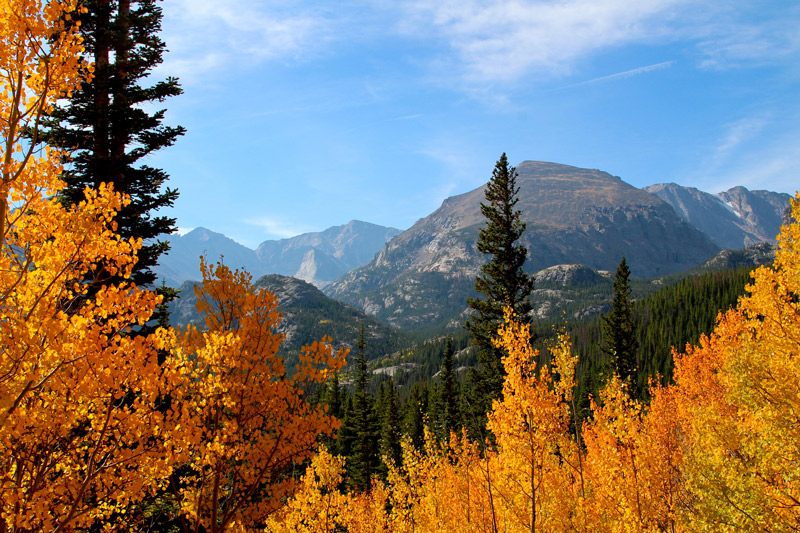Cindy requests a book on growing food in the mountains:
“Florida gardening can’t be any harder than Appalachian gardening. If my granny could feed her family here, you can surely feed yours there. Now, y’all move up here and write a book for the mountains! I’d love to hold that baby for a while.”
And Cheryl seconds it:
“I second the request about how to grow food on a mountain. We have mountain property very near Skyline Drive in Virginia at 2700 feet. I want to be able to grow food there as well as in my Maryland garden at 500 feet.”
I am not an expert in growing on slopes, and I have no intention on writing a book on the topic; however, I have some experience from my time in the tropical mountains and hills of Grenada, West Indies.
There is a point at which a slope becomes too steep for (safely) planting most annual crops and the area should instead be designated for trees and perennials instead.
Tillage on sloping land is a recipe for disaster. Just take a look at Providence Canyon in Georgia. Water can irrevocably destroy a landscape in short order.
Creating terraces can be done with much effort in a short period of time, or with much less effort over a long period of time.
It’s important to keep roots in the ground and make sure there are lots of barriers in the way of water and topsoil.
On sloping areas I would plant rows of trees and edible shrubs, then try to work animals through the system.
Sometimes you can graze cows, sheep or goats in areas that are not safe for farming. Steak, butter, milk and cheese are better foods than turnips and grain anyhow, plus proper grazing management will increase the life in the soil by building humus.
A certain amount of kitchen garden crops could be grown in terraced beds or raised beds around the house with space for animals beyond. Cooler mountain areas are also often good for additional cash crops, like mushrooms and ginseng and specialty woods for bowl-turners, luthiers and other craftsmen.
You can also grow trees deliberately as animal fodder, such as willows, basswood, mulberries, etc.
Look around and see what trees and crops already grow well in your area and work with the climate. Use the south-facing and north-facing slopes to your advantage, growing plants that need more or less warmth accordingly. And keep as many roots in the ground as possible to keep erosion from taking away your hard work.
I almost moved to the mountains of North Carolina at one point. Imagine how different my garden writing career might have been! It’s a marvelous climate with a unique bioregion. I love it, and I think if you focus on enjoying the climate and the slopes for what they are rather than trying to transform them into something they aren’t, you’ll find a lot of joy in your gardening.


6 comments
I love your answer and the approach to a mountain growing environment. I think I saw, 1. do what works 2. protect the soil 3. uses the natural plants that are already in the area 4.enjoy the process 5. use animals if you can. If I missed anything let me know.
Good summary! Thank you, Bill.
Talofa from Samoa. I am very interesting in your ideas and engineering about growing crops on a slop onside of the mountains. Please send me an email fusistuff@gmail.com. I would love to elaborate on it.
Don’t forget pawpaws!
Good addition!
Thank you! I have done some farming on mild slopes and found that terracing makes things a lot easier, although there’s some effort required initially. The last place I lived, the garden was on the edge of a somewhat steep slope and I suspected the poor soil there was in part due to all the runoff. So I built a barrier with chicken wire, piled logs behind it, and covered them with woodchips until I had a basically flat area to garden in. Over time the whole mess settled into a sort of earthen barrier – not the prettiest thing but it was very stable and the soil stopped running off.
Now I’m actually in western NC on the edge of the mountains, still renting but hoping to buy soon, and there’s a good chance our next property will be on even more steeply graded land. This definitely gives me some ideas of how to improve on my previous method by using perennials to create terraces.
My only question about livestock is do you think it should be limited to smaller animals? I wonder whether cows might accelerate erosion just because they’re so heavy. Even chickens can do quite a bit of digging. Or maybe animals should be added *after* the vegetative strips have had some time to establish themselves so they limit the erosion?
Comments are closed.